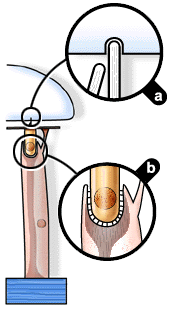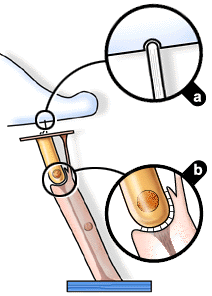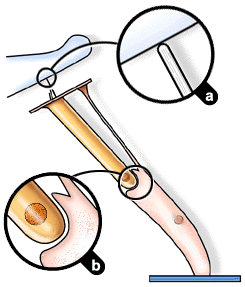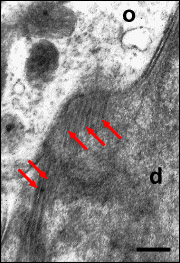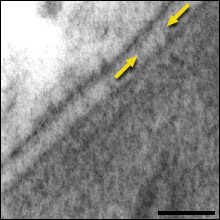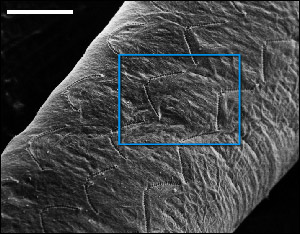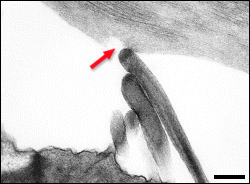| |
|
| Overview / Coupling / Membrane / Synapses / Active Mechanism / Oto-acoustic emissions | |
| Drawings: S. Blatrix; Pictures: M. Lenoir, R. Pujol | |
|
Schematic representation of the mechanical coupling between OHCs and surrounding structures |
|
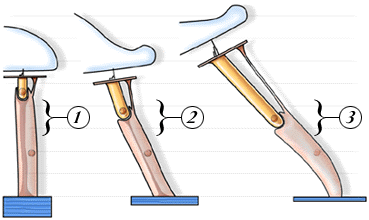 |
Stages 1 to 3 represent the coupling to their surrounding structures of OHCs in the bat (very tight), in the basal portion of a guinea pig cochlea, and in the apex of the guinea pig cochlea (very loose). In an individual cochlea, the strength of this mechanical coupling follows a decreasing gradient from base to apex - the higher the frequency, the stronger the coupling. This gradient accounts for the efficacy of the reverse transduction process (active mechanism). NOTE. In the scheme above as well as in diagrams below: OHC in yellow, basilar membrane in dark blue, Deiters' cell in pink with microtubules in brown, tectorial membrane in light blue. |
